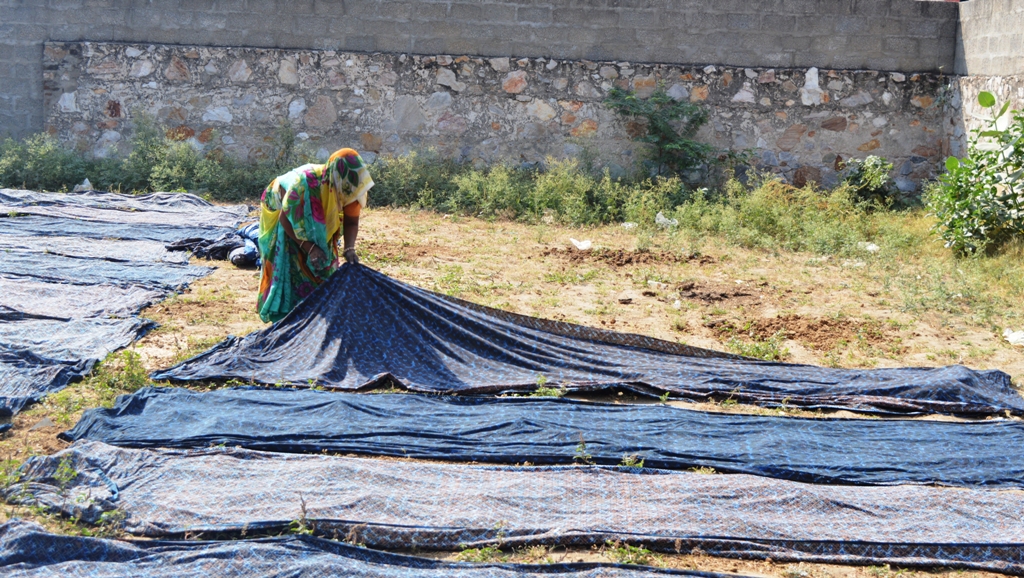indigo
Color dyeing is an integral part of the textile manufacturing process in the Indian subcontinent.
Natural dyes have been traditionally been extracted from organic and mineral sources –plant matter as well as the earth , and applied onto yarn or fabric. Dyeing methods vary from region to region.
Indigo is a dye that is probably the most ancient color cultivated along the banks of the Indus River. The word Indigo comes from the Greek word Indikon - blue dye from India, referenced in the notes of Pliny the Elder, a Roman naturalist and philosopher.
Traditional Indigo dyeing process:
Large maats (terracotta urns placed in the ground) are filled with crushed leaves, lime, and salt, and left to ferment for a month. Indigo dust sediments at the bottom of these maats. The sediments are filtered and crushed to form a mixture. The perfect pH for Indigo dye is 11-12 and so lime or jaggery are added to balance the pH if and when required.
This thick mixture is tied in cotton sacks and kept under the ground where the hot sand sucks away excess water for about two months, leaving behind an Indigo cake. The Indigo cake is pounded on a stone slab with water and Acacia torta seeds /henna leaves/jaggery/date palm is added until it becomes an even, yellowish-green slurry. This is stored in underground maat to maintain the right temperature.

